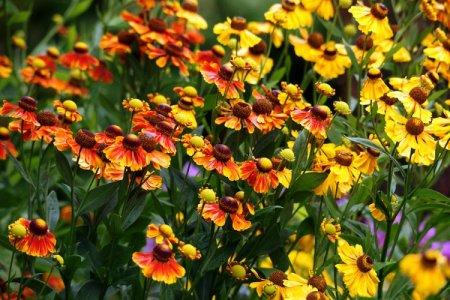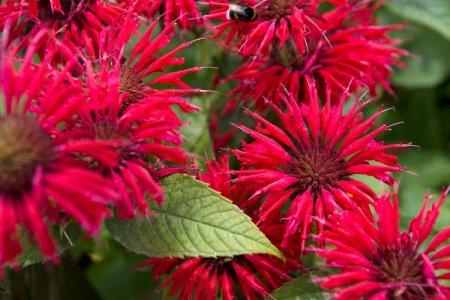
It is impossible to imagine the beginning of spring without charming galanthus blooming everywhere. These are the very snowdrops that we are looking forward to in the last frosty days. Do you want to know how to grow them yourself? Then read on!
general information
Galanthus is a herbaceous perennial and one of the earliest primroses. He doesn't even have to wait for the snow to completely melt. Scaly Galanthus bulbs are very small - up to 4 cm, but at the same time they are densely covered with children literally in a season.
Galanthus flowers resemble drooping bells of pure snow-white color. Gradually, they fade, and the peduncle dies off, so you do not need to cut it off on purpose. Galanthus is an excellent option for the northern regions of our country.

Galanthus species
Galanthuses have been cultivated for more than the first century, so there is nothing strange about the presence of different varieties. The following species are of greatest interest to florists!
Snow-white galanthus
The compact and most popular type up to 15 cm in height. However, there are already tall hybrid varieties in this category. Snow-white galanthus is very easy to grow, and it reproduces itself.

Ikarian Galanthus
It is immediately visible by the very bright green tint of the leaves. Decorative varieties with double flowers look especially interesting - a real curiosity!

Caucasian galanthus
Oddly enough, he came to us from Turkey. Very modest compact species about 10 cm tall with delicate snow-white flowers. The length of drooping buds reaches 3 cm.

Galanthus Elvis
Medium-sized galanthus up to 25 cm in height boasts very large flowers. And also - an early flowering period, because it blooms in February.

Folded galanthus
This is a later species that blooms in March, and sometimes already in April. It is notable for its characteristic waxy coating on the leaf plates and an expressive aroma.

Galanthus care
Despite the fact that many species of wild galanthus are listed in the Red Book, it reproduces well at home. You will have to control and thin out the landing more than worry that it is not feeling well!
Temperature and lighting
All primroses, common in the middle lane, are resistant to frost. But Galanthus is practically a record holder. A low temperature is more likely to benefit him, because due to it he blooms longer. But too warm winter can be fatal for bulbs that come out of suspended animation ahead of time. In this case, lighting is almost irrelevant.

Watering
Galanthus does not need special watering, because natural precipitation and melt water are enough for it. Only if the winter was completely snowless and was replaced by a dry spring, you can slightly moisten the soil.

The soil
Due to the fact that the soil is constantly moist in early spring, the soil should be very loose and well-drained. Otherwise, even unpretentious galanthus bulbs risk starting to rot.

Fertilizers and feeding
To make galanthus bloom longer and more intensely, feed it with mineral fertilizers with potassium and phosphorus. But do not use nitrogen and organic matter in large quantities, because instead of buds, deciduous mass will grow.

Pruning
Galanthuses do not need to be dug out for the winter. Just cut off the entire ground part after it completely dies off itself. Very young bulbs are mulched with peat immediately after planting for the winter.

Transfer
Galanthuses rapidly deplete the soil even when fertilized. And all because they grow almost like a weed. Therefore, once every 4-5 years, the bulbs are advised to be transplanted to a new place.

Storing the bulbs
The dug out bulbs are dried and stored in a plastic bag in a cool place. Before that, inspect them for damage and pests.In particular, larvae and caterpillars like to hide in them for the winter.

Planting and breeding galanthus
Galanthus bulbs are planted in the garden at the end of summer so that they can settle in a new place before winter. Planting depth depends on the size of the bulb, but on average it is about 5 cm.
If you want to propagate the plant, bury it deeper, and then in the process new bulbs will form on the peduncle. And if you plant it closer to the surface, it will grow worse, but will actively give children.
An adult bush can be propagated by division in summer or autumn, as the ground part dies off. And if you want - trust nature, because Galanthus simply reproduces by self-seeding and pleases for years.

Pest and disease control
The only disease that poses a real danger to Galanthus is fungus, due to the combination of high humidity and low temperatures. Do not over-thicken the planting, control the situation, cut out all suspicious shoots with leaves and use fungicides.
When incomprehensible deformations, bumps and spots appear on the bulb or shoots, it is better to destroy such specimens altogether. It may be a virus that cannot be cured at all, but is spreading rapidly.
Insects are also not too scary for Galanthus, because it is cold for them in early spring. But the bulbs can be damaged by rodents and moles that dug their tunnels nearby. If there is little damage, cut off this area, treat it with an antiseptic, dry it and plant the bulb again.
Another really dangerous problem is bulb nematodes that settle in the tissues of the bulbs. For mild damage, try soaking them in hot water. But if there are already a lot of pests, we advise you to burn such plants, disinfect the soil and not plant bulbs in this area for a couple of years.

Galanthus - photo
You probably already know what galanthus looks like in the forest or on the site. But after all, we have already found out that there are much more species of it than is commonly believed. See and compare!



























